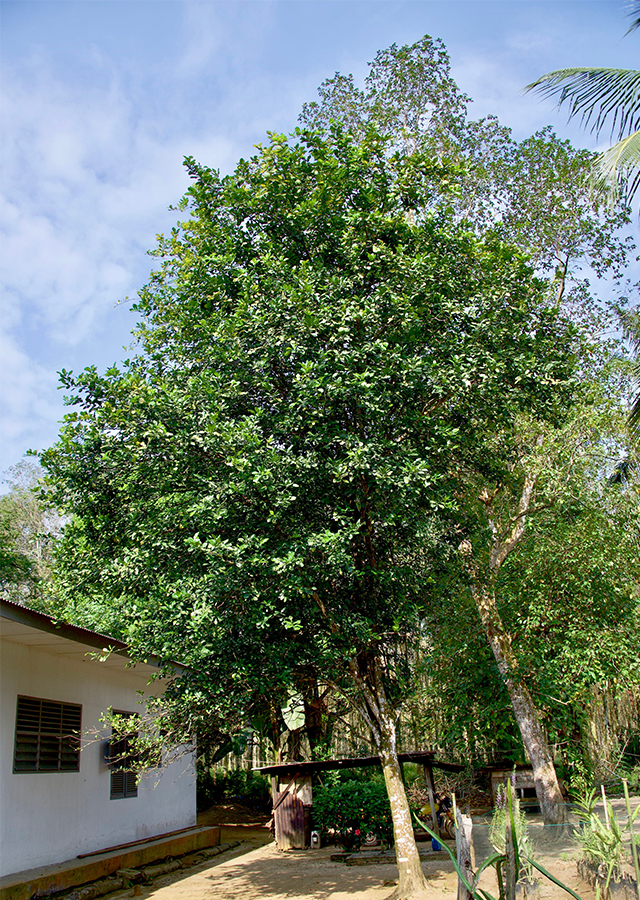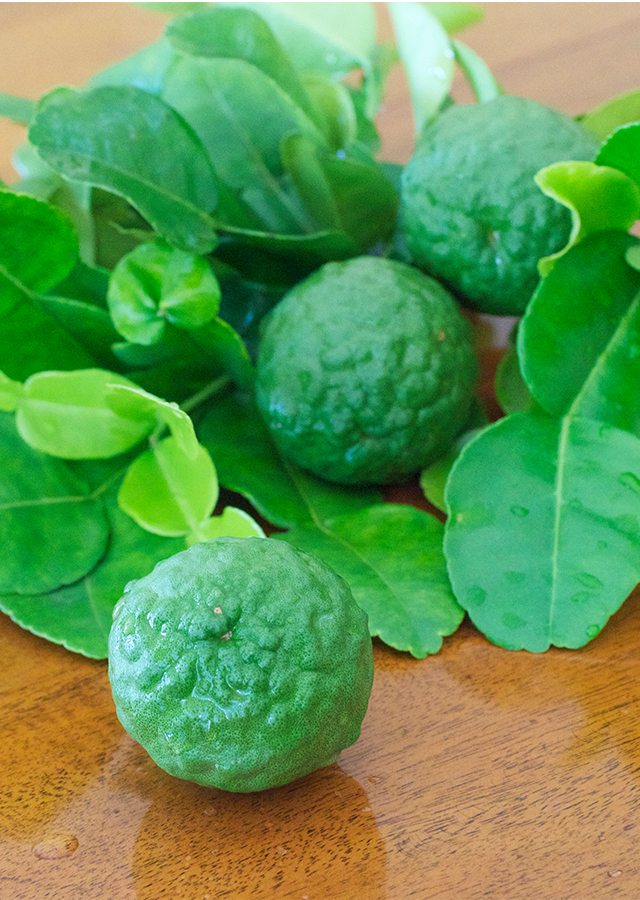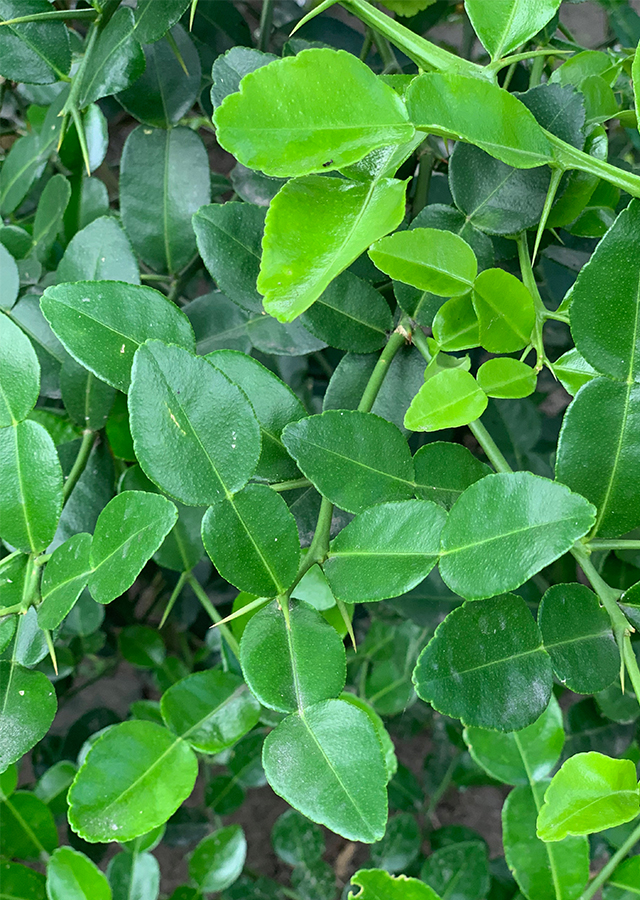Kaffir lime
Citrus hystrix DC.
Rutaceae
Location in our garden
Orchard



Synonym
Citrus auraria Michel
Citrus boholensis (Wester) Yu.Tanaka
Citrus celebica Koord.
Habitus
Trees. A small, thorny, evergreen tree that can grow 3 - 12 m tall, has a short, crooked, thin bole
Part Used
Leaves
Fruit
Rind
Growing Requirements
Full Sunshine
Habitat
Terrestrial
Overview
Kaffir lime is native to tropical Southeast Asia, Assam region of India, Indochina, Myanmar and Southern China. In Malaysia, Sri Lanka and Myanmar, it is found naturalized. The plant is a very common as Thai meal ingredient. In Southeast Asian cuisine, its fruits and leaves are used and its essential oil is used in perfumery.
Vernacular Names
Kabuyaw (Philippines), Ma feng gan (Chinese), Combava (French), Shauk cho (Burmese), Jeruk Purut (indonesia), Limau purut (Malaysia), Ma kruut (Thai), Chanh kaffir (Vietnamese).
Agroecology
This plant can be cultivated in tropical climates, subtropical with winter rain as in Mediterranean, or subtropical with summer rainfall as in Florida and southern Brazil. In General, the plant grow well at 13-38°C, under full sun, well-drained but moisture-retentive loamy soil with pH 5-6.
Morphology
- Roots - taproot.
- Stems - short, crooked, thin bole, and stiff spines.
- Leaves - alternate, unifoliolate, broadly ovate to ovate-oblong, 3-15 cm × 2-6 cm; expanded into prominent wings.
- Flowers - small, fragrant, white.
- Fruits - an ovoid to ellipsoidal berry, 5-7 cm in diameter, green to yellow, irregularly very bumpy, with 10-12 segments
Cultivation
- Generative propagation is done by seed. The seed is best sown, after thoroughly rinsing, in containers as soon as it is ripe. Generally, germination takes place within 2 - 3 weeks.
- Vegetative propagation is done by half-ripe wood cuttings - this species easily grows from cuttings, and by layering.
Chemical Constituents
Sabinene, ß-pinene, limonene, α -pinene, camphene, myrcene, terinen-4-ol, α -terpinol, linalool, terpinolene, citronellal, flavonoids, coumarins (Bergapten), volatile oils, ß-citronellol, citronelyl acetate.
Traditional Medicinal Uses
Medicinal Uses
- The study showed that broad spectrum inhibition against all Gram-positive bacteria, yeast and molds was demonstrated by the kaffir lime peel.
- Citrus hystrix leaves have been shown to be potent inhibitors of skin tumor by inhibit activation of the Epstein-Barr virus (EBV) caused by tumor promoters.
Traditional Uses
- The fruit is used to wash the head (in certain Asian countries, juice and peel rinds are used in shampoo and is believed to destroy head lice) and treat the feet to kill the leeches on the ground.
- Coumarin content in keffir lime,Bergapten, is often applied to tanning preparations to encourage skin pigmentation, although some people may suffer dermatitis or allergic reactions.
- Malay people used the peel as a tonic; fresh peels and dried fruits are used to reduce nausea, flatulence, and monitor menstruation; Rind is used in the treatment of headaches and worms in infants. Fruit juice is used for stomachaches and dyspepsia, expectorant and antidandruff; and with ginger and other aromatics, it used to treat postpartum septicemia.
- In Meghalaya, India, all the fruit or juice is used orally by the Garo and Khasi tribes as an antidote to food poisoning. To alleviate fever and stomach disorders, fresh or stored juice is used.
Part Used
Reference Sources
- CABI. (2019). Invasive Species Compendium. Citrus hystrix (mauritius bitter orange). https://www.cabi.org/isc/datasheet/13444. 11-08-2020.
- Fern, Ken, (2014). Useful Tropical Plants. Citrus hystrix. http://tropical.theferns.info/viewtropical.php?id=Citrus+hystrix. 11-08-2020.
- StuartXchange. (2016). Philippine Medicinal Plants. Kabuya. http://www.stuartxchange.org/Kabuyaw.html. 11-08-2020.
- Jansen, P.C.M., Jukema, J., Oyen, L.P.A., T.G. van Lingen. (1992). Citrus hystrix. in Verheij, E.W.M. and Coronel, R.E.: Edible Fruits and Nuts. Plant Resources of South-East Asia (PROSEA) No.2: 326.

